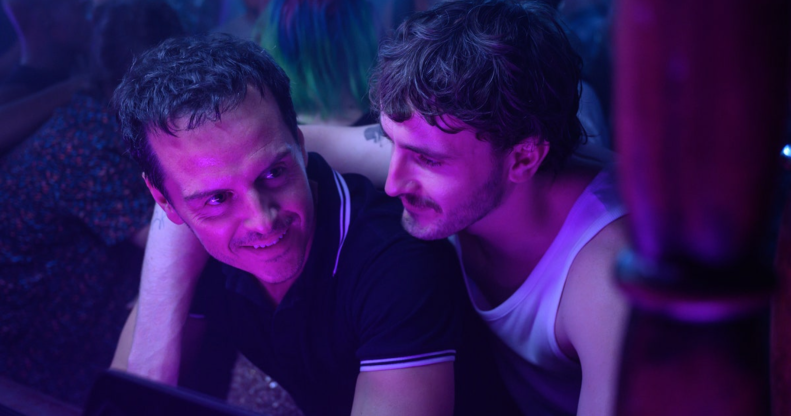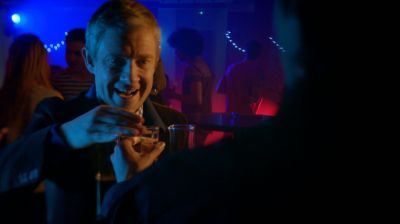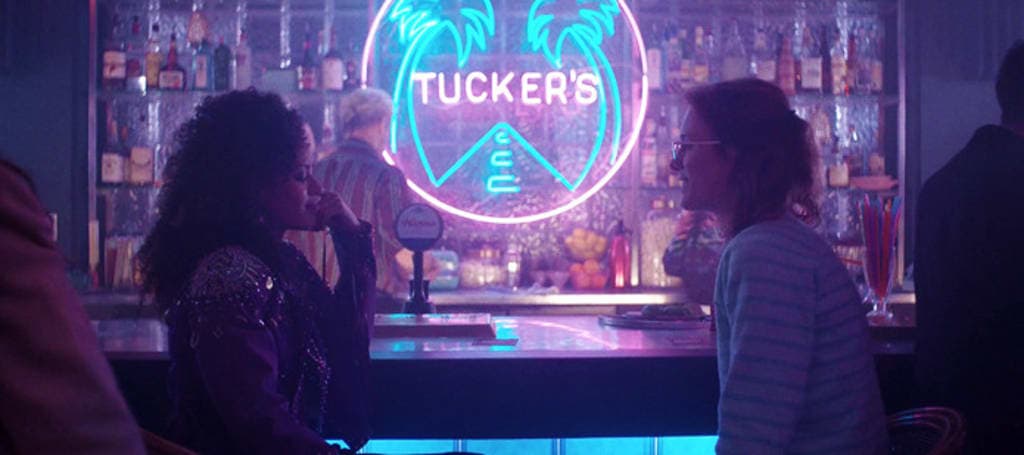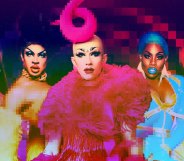What is bisexual lighting? The history behind the cinematic phenomenon

In All of Us Strangers, some reviews stated: “the bisexual lighting is also working overtime, cascading pink and blue light all over them.” (Searchlight Pictures)
Bisexual lighting began as a meme, but it’s now a fairly universally recognised cinematic trope. I mean, did anyone catch its clever use in Andrew Haigh’s heart-wrenching new film All of Us Strangers, starring Andrew Scott and Paul Mescal?
Bisexual lighting has gathered so much attention over the last decade that it’s now acquired its own Wikipedia page, referring to the use of pink, purple and blue hues to evoke a bisexual-soaked look across film, TV and even live music in line with the bisexual flag, which features these very colours.
Need a revision session? Here, we dive into the history behind bisexual lighting and its use in film, TV and even music.
What is the history of bisexual lighting?

Though it’s difficult to pinpoint the exact origin story behind bisexual lighting, it’s been referenced since the 2010s.
That’s right, we’re going back to the heyday of Tumblr, because in 2014, an early use of the term was employed in reference to a pink-and-blue-tinged scene in Sherlock.
As ever, fans were speculating about the relationship between the detective, played by Benedict Cumberbatch, and his sidekick John Watson.
From then onwards, it was gradually used more and more to discuss and analyse pop culture moments and has been used as a subtle artistic indicator of sexuality.
Where has bisexual lighting been used?
Bisexual lighting has been used in various places, from Hollywood blockbusters like Black Panther, Atomic Blonde and Logan to music videos and Netflix series.
Notably, singer and actress Janelle Monáe made use of bisexual lighting in “Make Me Feel” back in 2018, a sexually charged bi anthem in which she flirts with Thor: Ragnarok star Tessa Thompson.
Elsewhere, Demi Lovato used bisexual lighting for her 2015 anthem “Cool For The Summer”, as did Ariana Grande in “7 Rings,” whilst Crazy Ex-Girlfriend’s Darryl Whitefeather used the scheme in his coming out bop, “Gettin’ Bi.”
It isn’t just pre-recorded media that’s used bisexual lighting: the term has also been used to describe the electric blue and magenta pink lights that flash during Harry Styles’ song, “Medicine,” during live performances. Elsewhere, Swifties theorised that the colour palette on her 2019 album, “Lover,” was also indicative of the bisexual lighting trope.
An all-time favourite episode of Black Mirror for the LGBTQ+s, San Junipero, which follows the relationship between Yorkie and Kelly, also employs this lighting technique.

More recently, Heartstopper made use of bisexual lighting in season one as Nick Nelson (Kit Connor) watches his friend Tara (Corinna Brown) kiss her girlfriend Darcy (Kizzy Edgell) at a party. Suddenly enlightened about his own sexuality, he’s illuminated by blue, purple and pink hues and, as “Clearest Blue” by CHVRCHES plays (AKA another accompaniment to the bi lighting), he runs off to find Charlie (Joe Locke).
“I remember telling Diana [Olifirova], our amazing cinematographer, ‘If you can just bathe Nick in the colours of the bisexual flag as much as possible, that would be really appreciated,’” the show’s executive producer Patrick Walters told Tudum, a Netflix fan event.
“And, by gosh, she really rose to that challenge. Those colours are everywhere.”
How did this story make you feel?

